Cozy, Soul-Warming Best Tomato Soup Recipe for Chilly Days
Rich, velvety best tomato soup captures the essence of comfort in every spoonful.
Ripe tomatoes from local gardens blend seamlessly with fragrant herbs and creamy textures.
Cozy kitchens come alive with this simple yet sophisticated recipe.
Home cooks can easily master this delightful dish without complicated techniques.
Warm aromas will drift through your living space, promising pure culinary satisfaction.
Seasonal ingredients transform an ordinary meal into an extraordinary experience.
You’ll want to savor each delectable bite of this soul-warming classic.
Reasons To Enjoy The Best Tomato Soup
Key Ingredients For The Best Tomato Soup
For the Base:For the Tomato Components:For the Liquid and Seasonings:For the Finishing Touches:Step-By-Step Guide To Tomato Soup Preparation
Step 1: Sauté Aromatic Onions
Warm olive oil or butter in a spacious pot over medium heat. Toss in diced onions and gently cook until they transform into a soft, translucent golden treasure, approximately 5-7 minutes.
Step 2: Unleash Garlic’s Fragrance
Sprinkle minced garlic into the pot and let it dance for about a minute, releasing its intoxicating aroma throughout the kitchen.
Step 3: Boost Tomato Intensity
Introduce tomato paste and stir continuously for 2 minutes, allowing it to caramelize and intensify the soup’s rich tomato essence.
Step 4: Build the Liquid Foundation
Add canned tomatoes, crushing them gently with a wooden spoon to release their juices. Pour in vegetable or chicken broth, creating a harmonious liquid base.
Step 5: Season with Herbal Magic
Incorporate herbs and seasonings:Taste and adjust to your preference.
Step 6: Simmer and Develop Flavors
Bring the mixture to a gentle boil, then reduce heat.
Allow the soup to simmer peacefully for 20-30 minutes, letting the flavors mingle and deepen.
Step 7: Blend to Silky Smoothness
Use an immersion blender to transform the soup into a velvety smooth texture.
Alternatively, carefully transfer to a countertop blender, working in batches.
Step 8: Introduce Creamy Richness
Swirl in heavy cream or half-and-half, creating a luxurious, silky finish.
Taste and fine-tune seasonings as needed.
Step 9: Serve with Stylish Flair
Ladle the soup into warm bowls.
Garnish with options like:Expert Tips To Perfect Your Tomato Soup
Delicious Twists To Try On Tomato Soup
Great Pairings For The Best Tomato Soup
Best Practices For Storing Tomato Soup Properly
FAQs
Yes, you can substitute fresh tomatoes. Use about 2 pounds of ripe tomatoes, peeled and chopped, instead of canned tomatoes. Roasting them first will enhance the flavor.
The recipe can be vegetarian if you use vegetable broth. Just ensure all ingredients like cream are vegetarian-based.
Add extra vegetables like carrots or red bell peppers during the sauteing stage. You can also stir in some cooked quinoa or white beans for added protein.
Print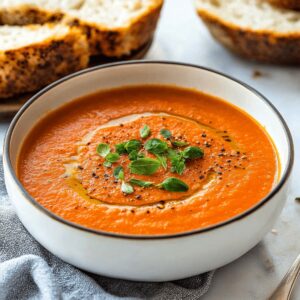
Best Tomato Soup Recipe
- Total Time: 40 minutes
- Yield: 6 1x
Description
Classic tomato soup delights with rich, velvety flavors from ripe Italian tomatoes and fresh herbs. Home cooks will savor this comforting bowl that transports you to a rustic kitchen in Tuscany.
Ingredients
- 2 (28 oz) cans whole tomatoes (preferably San Marzano)
- 4 cups vegetable broth (or chicken broth)
- 2 tablespoons olive oil (or butter for richness)
- 1 large onion, diced
- 3 cloves garlic, minced
- 1 tbsp tomato paste
- 1/2 tsp dried basil (or 1 tablespoon fresh, chopped)
- 1/2 tsp dried oregano
- 1 tsp sugar (optional)
- Salt and pepper to taste
- 1/4 cup heavy cream or half-and-half (optional)
- Optional garnish: Fresh basil leaves, croutons, or a drizzle of olive oil
Instructions
- Warm olive oil or butter in a large pot over medium heat, gently sautéing diced onions until they become translucent and soft, approximately 5-7 minutes.
- Introduce minced garlic to the pot, allowing it to release its aromatic essence for one minute.
- Incorporate tomato paste and cook for 2 minutes, intensifying the rich tomato profile.
- Pour in canned tomatoes, crushing them with a spoon, and add vegetable or chicken broth to create a robust liquid base.
- Enhance the soup’s complexity by stirring in basil, oregano, and optional sugar, then season with salt and pepper to personal preference.
- Elevate the heat to bring the mixture to a boil, then reduce to a gentle simmer for 20-30 minutes, allowing flavors to harmonize and develop.
- Transform the soup’s texture using an immersion blender for a smooth consistency, or carefully transfer to a countertop blender in batches.
- Introduce heavy cream or half-and-half for a luxurious finish, tasting and adjusting seasonings as needed.
- Present the soup piping hot, adorned with fresh basil leaves, crisp croutons, or a delicate drizzle of olive oil for an elegant touch.
Notes
- Swap out heavy cream for lighter alternatives like coconut milk or Greek yogurt to reduce calories and add a tangy twist.
- Roast fresh tomatoes before blending to intensify their natural sweetness and create a deeper, more complex flavor profile.
- Customize the soup’s texture by adjusting blending time – leave some chunks for rustic appeal or blend completely smooth for a velvety consistency.
- Enhance nutrition by adding a handful of spinach or kale during the simmering stage, which will boost vitamins without changing the soup’s core flavor.
- Prep Time: 10 minutes
- Cook Time: 30 minutes
- Category: Lunch, Dinner, Appetizer, Snacks
- Method: Sautéing
- Cuisine: American
Nutrition
- Serving Size: 6
- Calories: 115 kcal
- Sugar: 4 g
- Sodium: 350 mg
- Fat: 7 g
- Saturated Fat: 1.5 g
- Unsaturated Fat: 5.5 g
- Trans Fat: 0 g
- Carbohydrates: 10 g
- Fiber: 2 g
- Protein: 2 g
- Cholesterol: 7 mg

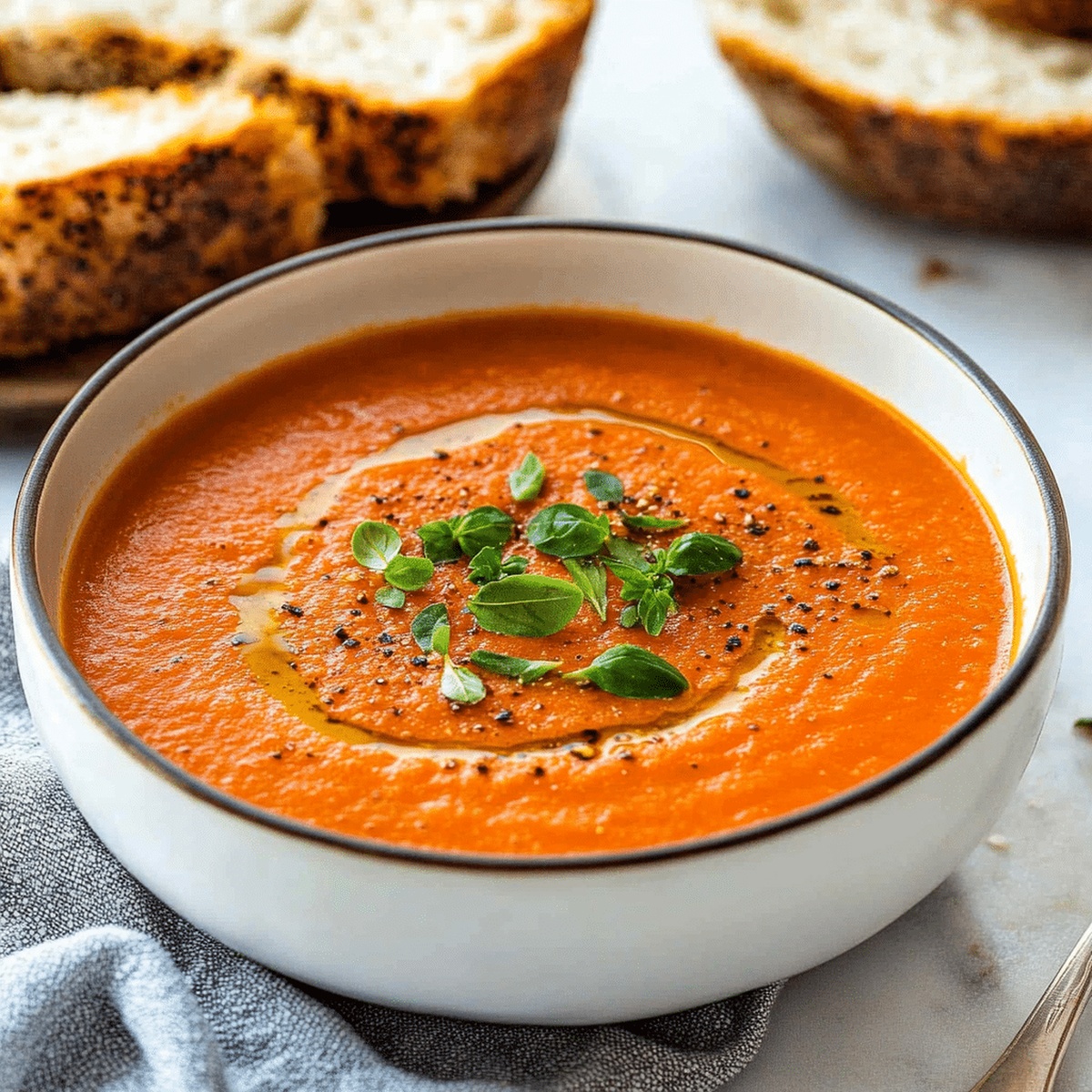
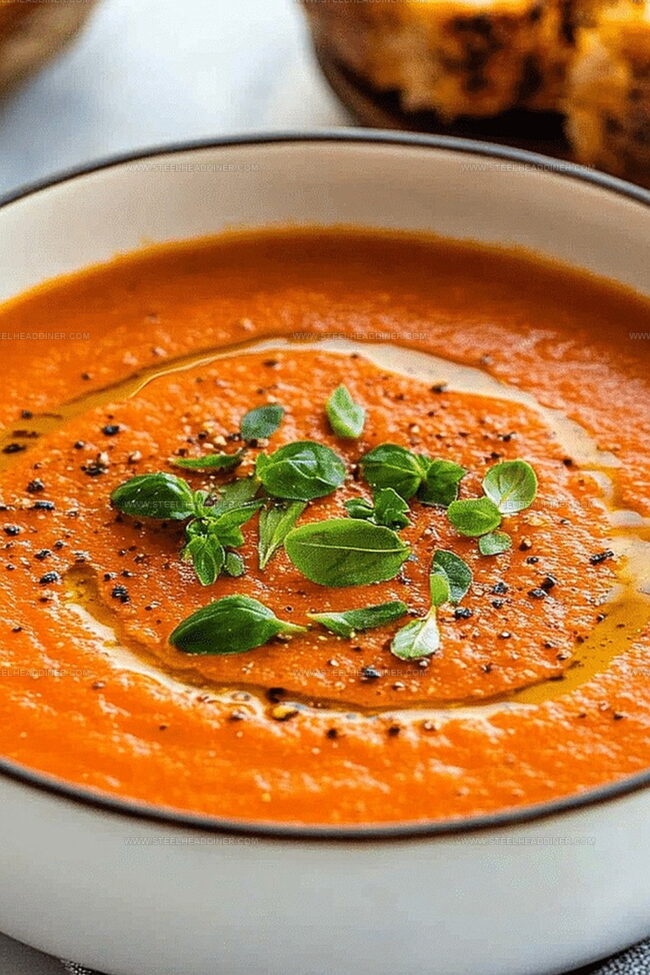
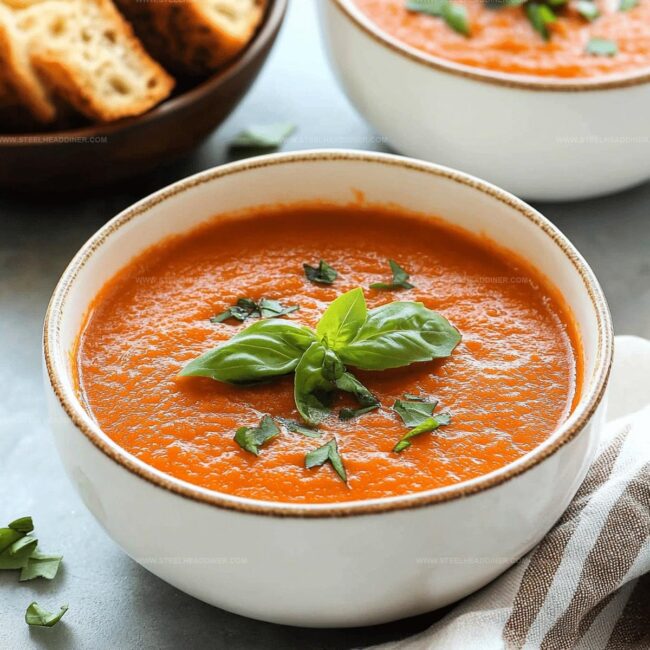
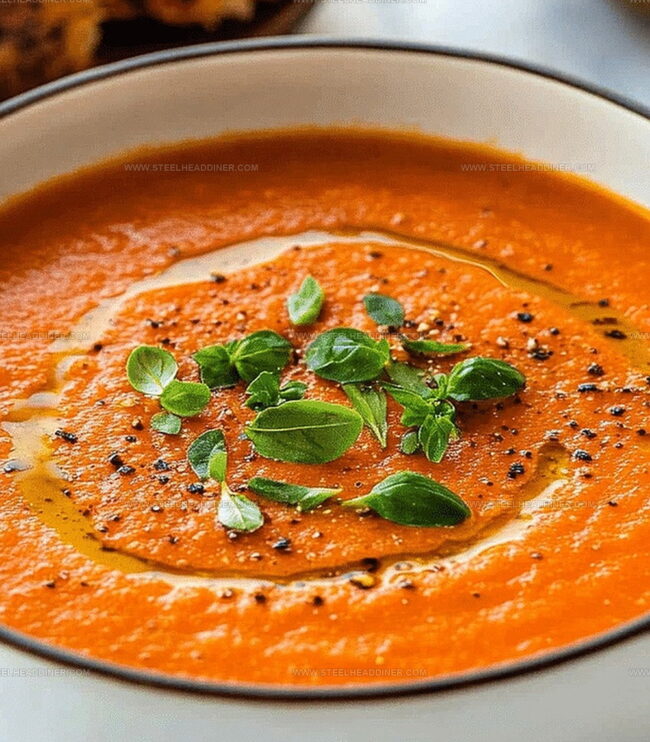
Jack Monroe
Founder & Recipe Innovator
Expertise
Pacific Northwest cuisine, Single-serving recipe development, Sustainable sourcing and cooking, Modern comfort food
Education
Brightwater
Associate of Applied Science in Culinary Arts
Focus: Sustainable cooking, seasonal ingredients, and food systems education
Jack grew up with a fishing rod in one hand and a cast-iron skillet in the other. After graduating from Brightwater: A Center for the Study of Food, he set out to prove that cooking for one could still taste like a feast.
Jack believes that food should feel real: fresh, fearless, and a little wild, just like the rivers he grew up around. For Jack, every single dish is a small adventure, and the best ones are the ones you can cook with heart, not hassle.